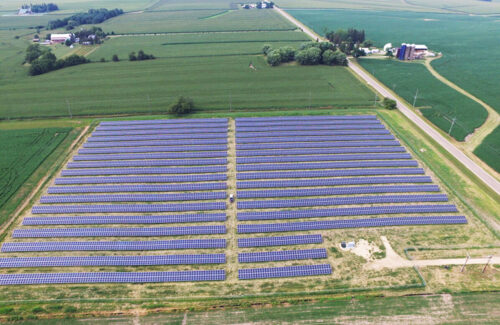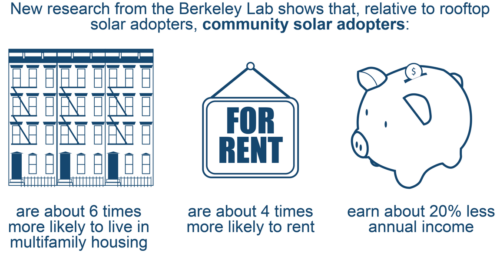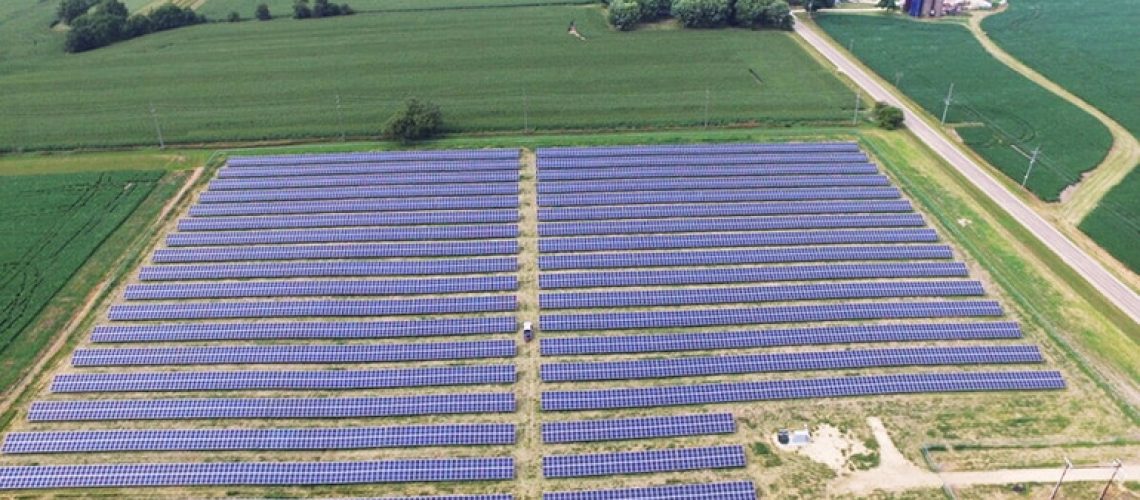
A 3-MW community solar project in Morris, Illinois. Summit Ridge Energy
More than four million households had adopted rooftop solar in the United States by the end of 2023. However, certain communities still face substantial barriers to rooftop solar adoption, especially households living in multifamily housing, renters and low-income households. Community solar — where multiple customers buy solar from a shared system — has emerged as a potential model to expand solar access to these underserved communities. Unlike rooftop solar, community solar poses no specific barriers to multifamily housing occupants or renters and community solar may be more economically accessible to low-income households.
In a new paper recently published in Nature Energy, researchers from the Berkeley Lab and the National Renewable Energy Lab (NREL) evaluate the degree to which community solar has expanded access to solar adoption. For the first time, the researchers combine household-level data from Berkeley Lab’s “Tracking the Sun” rooftop solar adopter data set with data compiled under NREL’s “Sharing the Sun” community solar research, as well as additional community solar adopter data collected for the study. The researchers statistically analyze the demographic characteristics of the two adopter groups to evaluate how well community solar has performed in reaching communities underserved by the rooftop solar market. The analysis provides early evidence of the impacts of community solar on solar access based on historical data.

The researchers reach two main conclusions.
First, the researchers conclude that community solar has effectively expanded solar access to multifamily housing occupants, renters and low-income households. The data show that community solar adopters in 2023 were about 6.1-times more likely to live in multifamily buildings than rooftop solar adopters, 4.4-times more likely to rent, and earn 23% less annual income. These results suggest that community solar has extended solar adoption to communities that would have otherwise struggled to adopt rooftop solar.
Second, the researchers show that these access benefits have been driven roughly evenly by differences in business models and differences in policy. The community solar business model has allowed households to adopt solar without owning a home or having exclusive access to a rooftop, two conditions that would pose substantial barriers to rooftop solar adoption. As a result, community solar can expand solar access without specific policies to support such access, especially among multifamily building occupants and renters. Nonetheless, the researchers find that policy has augmented those access benefits, particularly those that provide targeted support to help low-income households adopt community solar. Statistical analysis suggests that these types of policy supports explain around two-thirds of the differences in income levels between community and rooftop solar adopters, around 40% of differences in renter rates and around 20% of differences in terms of multifamily housing.
Funding support was provided by the U.S. Department of Energy Solar Energy Technologies Office as part of the Solar Energy Innovation Network Initiative.
News item from Berkeley Labs



